War and Peace est un film de genre Documentaire réalisé par Anand Patwardhan avec Anand Patwardhan
War and Peace (2002)
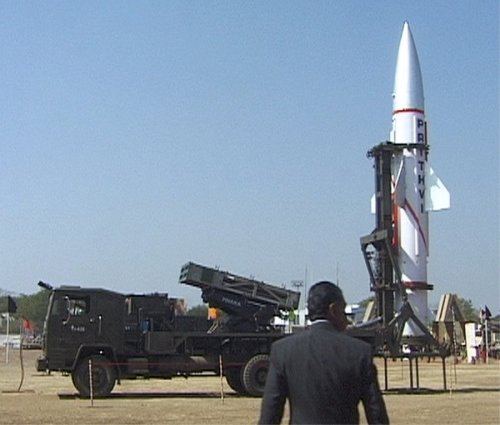
Si vous aimez ce film, faites-le savoir !
- Infos
- Casting
- Infos techniques
- Photos
- Vidéos
- Passages TV
- Citations
- Personnages
- Musique
- Récompenses
War and Peace (Jang Aur Aman) is a 2002 Indian documentary film directed by Anand Patwardhan. The film covers the Indian and Pakistani nuclear weapons tests in 1998, as well as the nationalist rhetoric that accompanied these tests. It also explores the ill-effects of the Indian test on the surrounding population and the reactions to the test among the government and the public. The latter part of the film also covers the perception of nuclear weapons in Japan and the United States. Upon the film's completion, the Indian censor board demanded that Patwardhan make 21 cuts before it could be released, including cutting all speeches by politicians. Patwardhan refused and took the matter to court; the Bombay high court ruled in his favor a year later, and the film was released without any cuts.
Synopsis
The documentary begins with the assassination of Mahatma Gandhi by the religious extremist Nathuram Godse in 1948. The film then describes the years after Indian independence. In a voice-over, Patwardhan describes several events, including the United States' use of the nuclear bomb, the nuclear arms race during the cold war, and India's first nuclear test in 1974. Patwardhan summarizes them in the following manner: "The collapse of socialism saw a revival of bigotry. America had now become our role model." The film then examines the growing nuclear nationalism in India. It covers the Hindu-nationalist rhetoric of the Bharatiya Janata Party that surrounded Indian nuclear weapons tests in 1998. The film covers the "Global Peace March" that occurred following the nuclear tests at Pokhran, and the opposition it faced from activists of the Sangh Parivar. It also covers the rise of religious extremism in both India and Pakistan. Patwardhan travels to Pakistan, where he interviews several people, including school-girls participating in a debate on the use of the bomb. In the second half of the documentary, Patwardhan travels to Japan to interview the hibakusha, survivors of the atomic bombings of Hiroshima and Nagasaki by the United States. The film then moves to the United States, where Patwardhan interviews curators of the Smithsonian Institution. The curators describe how the United States Congress blocked an attempt to create an exhibition on the American use of the atomic bomb on Hiroshima, and the effects of nuclear weapons. A postscript to the film shows the September 11 attacks, and the response of the US.Acteurs
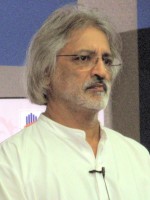
Anand Patwardhan
(Narrateur)
Commentaires
Postez un commentaire :
Suggestions de films similaires à War and Peace
Il y a 0 films ayant les mêmes acteurs, 5 films avec le même réalisateur, 8965 ayant les mêmes genres cinématographiques, pour avoir au final 70 suggestions de films similaires.Si vous avez aimé War and Peace, vous aimerez sûrement les films similaires suivants :

Bombay, Our City (1985)
, 1h15Réalisé par Anand Patwardhan
Genres Documentaire
Thèmes Documentaire sur les villes
Note74%





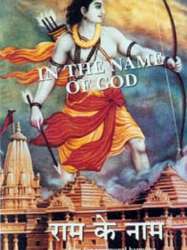
Ram ke Naam (1992)
, 1h15Réalisé par Anand Patwardhan
Genres Documentaire
Note88%





Ram ke Naam explores the VHP's campaign to demolish the Babri Masjid and build a temple to Rama in its place. The film begins with a clip of an organizer describing Advani's rath yatra in 1990. It then shows scenes from the yatra, with young men dressed in saffron seen in Ayodhya, followed by a video prepared by the VHP. The video depicts an incident at the temple in 1949, when an idol of Rama "appeared" inside the mosque. In the VHP's retelling, Rama is shown descending from the sky and miraculously appearing in the mosque, watched by astonished spectators, followed by a member of the VHP telling the same story.

Narmada Diary (1995)
Réalisé par Anand Patwardhan
Genres Documentaire
Thèmes L'environnement, Documentaire sur l'environnement, Documentaire sur les technologies
Note72%





 , 2h
, 2hRéalisé par Anand Patwardhan
Genres Documentaire
Thèmes Documentaire sur le droit
Note84%





The title of the first section is a reference to the ordeal that the Hindu god-king Rama used to test the fidelity of his wife after rescuing her from the demon king Ravana. The segment describes the various interconnected instances of communal violence in India in the years prior to the film. The film opens with the aftermath of the anti-Muslim riots in Bombay that followed the demolition of the Babri Masjid in December 1992. Several Hindu youth are heard speaking to the cameraman, saying that they had enjoyed the killing and looting, and that a list of Muslim individuals had been prepared beforehand, and that some authority figures knew of the plans to target Muslims.
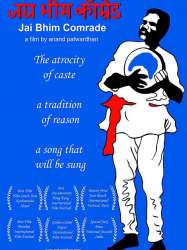
Jai Bhim Comrade (2012)
, 3h19Réalisé par Anand Patwardhan
Genres Documentaire
Note83%





Jai Bhim Comrade begins with a description of the Indian caste system and its oppression of the Dalit community. The film includes a song by Dalit poet and activist Vilas Ghogre, followed by a shot of a newspaper clipping describing his suicide in reaction to the Ramabai killings in 1997. The documentary then describes the killings; on 11 July 1997 a statue of B.R. Ambedkar in the Dalit colony of Ramabai had a garland of footwear placed over it, an act considered to be a desecration. An initially peaceful protest was fired upon by a team of Special Reserve Police Force members, killing ten protesters, and other protests later in the day saw further police violence. Commentators stated that the violence was motivated by caste-based prejudices, as the leader of the police team stood accused of several cases of mistreatment of Dalit people. The Dalit singer, poet, and activist Vilas Ghogre hanged himself in protest at the incident. After narrating the incidents surrounding the killing, the documentary follows Patwardhan on his visits to the families of those killed in the firing, as well as to Ghogre's wife. The film tries to reconstruct the incident by interviewing witnesses on both sides. The footage shot by a civilian bystander is used to contradict the description of the incident given by the police.

My Four Children (2002)
, 53minutesOrigine Israel
Genres Documentaire
Thèmes L'adoption, L'enfance, La famille, Documentaire sur une personnalité, Le handicap
 , 40minutes
, 40minutesRéalisé par Robert Houston
Origine Etats-Unis
Genres Documentaire
Thèmes Documentaire historique, Documentaire sur la politique, Politique
Acteurs Nick LaTour
Note78%





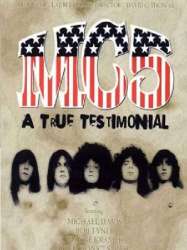
MC5: A True Testimonial (2002)
, 1h59Genres Documentaire, Musical
Thèmes La musique, Documentaire sur la musique, Documentaire sur une personnalité, Musique
Acteurs Wayne Kramer, Michael Davis
Note77%






Maxime, McDuff & McDo (2002)
, 52minutesRéalisé par Magnus Isacsson
Origine Canada
Genres Documentaire
Thèmes Le monde du travail, Documentaire sur la politique, Documentaire sur les villes, Politique
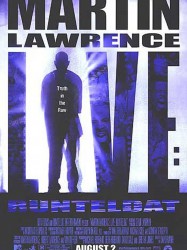 , 1h53
, 1h53Réalisé par Martin Lawrence, David Raynr
Origine Etats-Unis
Genres Comédie, Documentaire
Thèmes La musique, Documentaire sur la musique, Documentaire sur une personnalité, Musique
Acteurs Martin Lawrence, Nancy O'Dell, Mikki Padilla
Note54%





 Connexion
Connexion